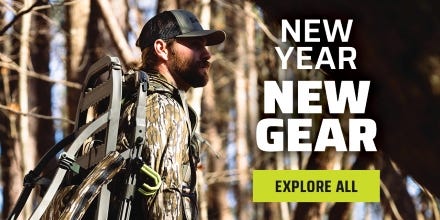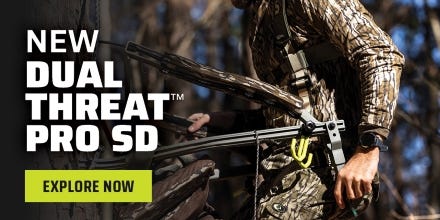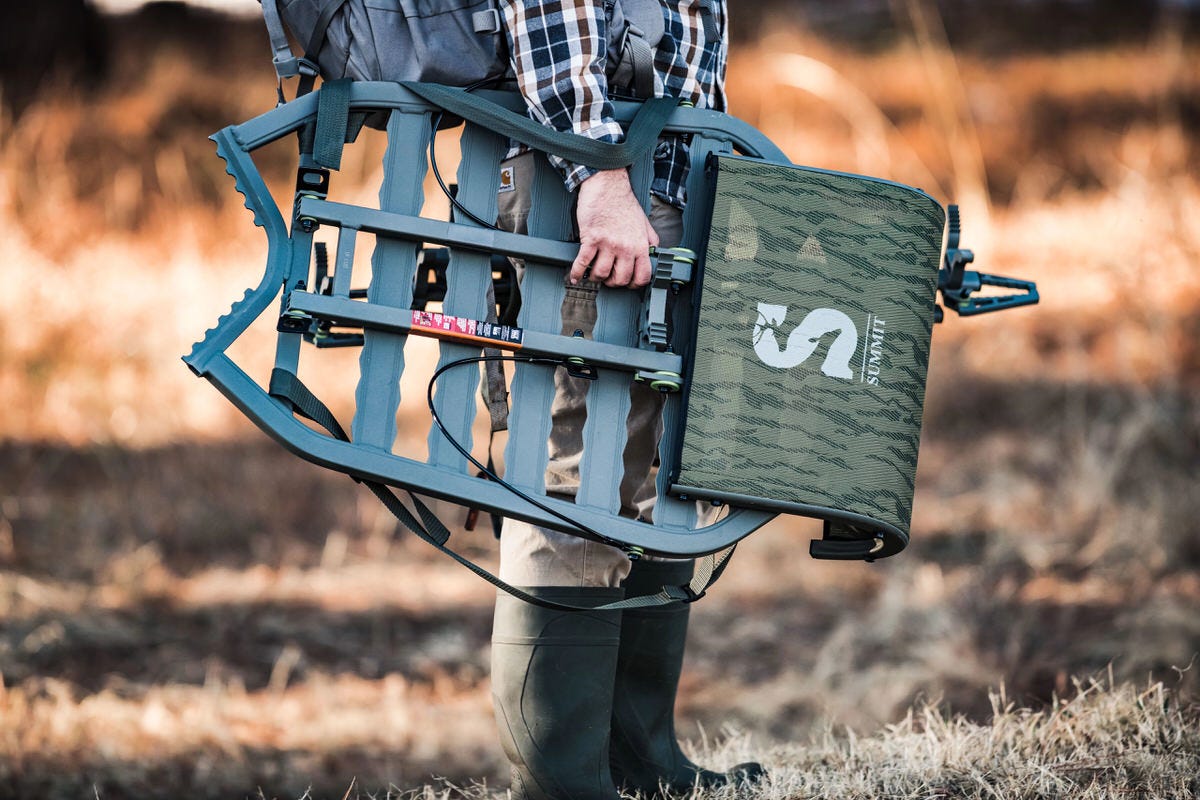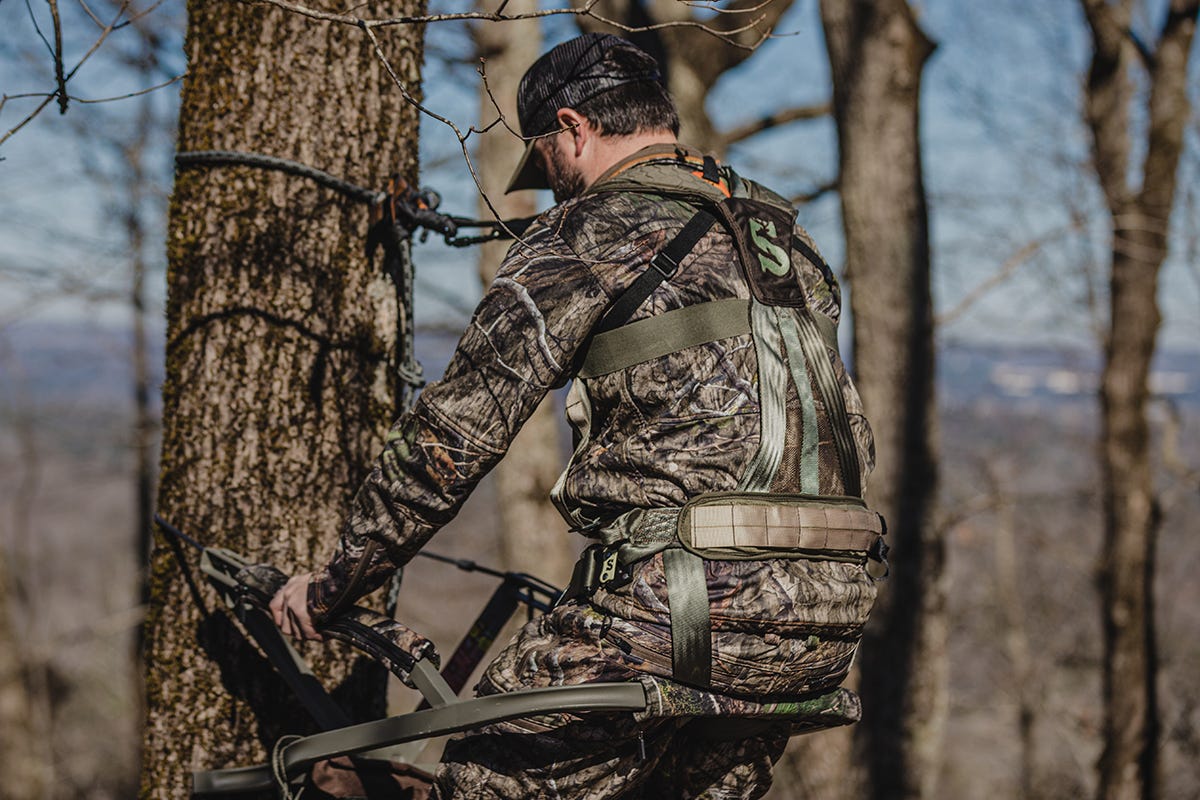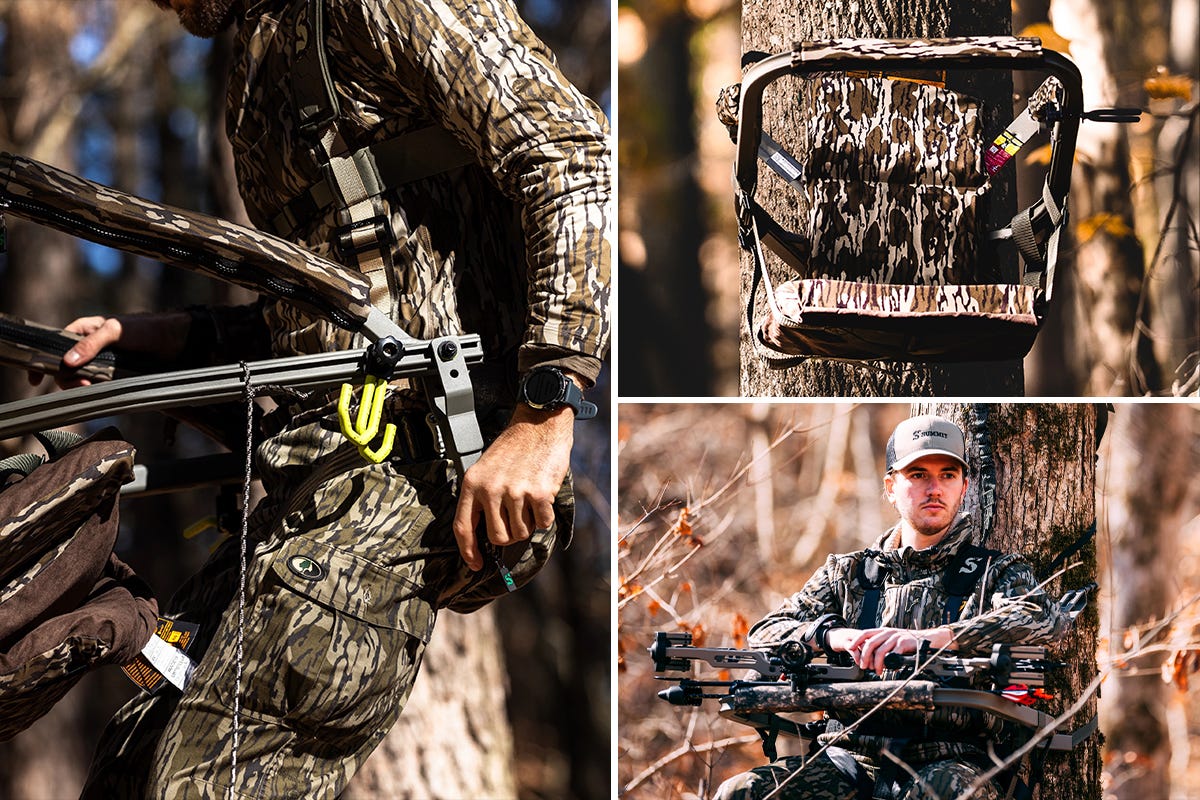- Jul 31, 2020
Preseason Treestand Checklist
Before you hang your stands, make sure each is in good working order by following this six-part checklist.
Growing up in southern Michigan, I'm no stranger to small parcels of land, lots of hunting pressure, and small whitetail ranges.
Find a great stand site here, and you've found a stand site that will produce for a long time. Sure, I change areas and stand locations often, but I have a set stable of “must-hunt” locations, particularly during the rut.
In the past, my preseason routine was to pay a visit to each stand at some point in late summer to make sure it hadn't walked off. I'd check my shooting lanes; do a quick “safety” check of the stand, straps, and climbing sticks; and call it good.
Then one cold November morning, as I stepped onto one of those stands, the straps-made brittle by years of UV exposure and strained by the growth of the tree-popped. Just. That. Fast.
Fortunately, I didn't fall. I still had one foot on my climbing sticks and was able to catch myself. But that was the last time I ever left a stand out year-round and was the start of my preseason ritual of stand check and prep. Here's what I do:

1. GET THEM ALL OUT.
This should go without saying, but remove all of your stands at the end of every season. I know it's a pain. I know it's a hassle. But it's a must. I remove every stand I have out each year (and I have dozens). If for some reason you have to leave a stand out, at least loosen the ratchet straps to allow for tree growth and to prevent unwanted stress.
2. POWERWASH THEM.
This might seem like a strange step but trust me... the only way you can really inspect a stand and all its components is by making sure it's clean. Power washing will remove the dirt, grime, and other materials than can accumulate on a stand over the course of a season. It can also remove some surface rust or flaking paint. This is important because rust and paint can cover up potential issues. If a stand is older and the paint or powder coating is stained, peeling off, or has been banged and abused, power washing will prep the stand for touchup.
3. CHECK THE BOLTS.
I disassemble every stand in the offseason. The process is pretty simple, and it starts with removing all of the bolts. This also makes it easy to check each one. Any bolts that have rusted or show any sign of wear should be replaced. A note of caution here: Tree-stand bolts are likely not the same as the one you find in the bargain bin at the hardware store. Contact the stand manufacturer for replacement bolts or to learn the exact grade and dimensions of the OEM bolts.
4. CHECK/REPLACE CABLES.
Today's stands are incredibly strong and safe. They're also light and easily portable. A big reason for both is the use of highly engineered cable systems. Those cables are what maintain the platform integrity when placed in a tree. No cable is indestructible, however, and they do occasionally need to be replaced. Again, a careful inspection of every cable is in order. If you see a nick, a rust spot, or any sort of kinks or damage, contact the manufacturer and get a new one.
5. INSPECT/REPLACE STRAPS.
Again, the straps used on today's stands are incredibly strong. But they're not infallible and they require some level of maintenance. I start by giving each strap a careful once-over. I look for any issues with the webbing, the ratchets, or the tightening mechanism. If all looks good, I'll lubricate any metal parts with white lithium grease and be done. If a strap shows any sign of wear, I'll replace it. Regardless of how a strap looks, I replace it every few years. UV light can play havoc with synthetic materials, and most straps are made of some sort of nylon. Again, replacement parts are often available through the stand's manufacturer.
6. REASSEMBLE/FINAL INSPECTION.
With all parts, cleaned, touched up and replaced as needed, it's time to put the stand back together and give it another thorough inspection. Look at every weld and joint. Check for cracks in the metal. I like to replace nylon washers during the assembly process, as these washers are critical in preventing squeaks and creaks in a stand. Then I take the stand to a backyard tree and mount it close to the ground. I step onto the stand and again make sure everything is as it should be.
Then, and only then, does it return to the woods. - Tony Hansen
About the Author: Tony Hansen manages for and hunts mature whitetails in his home state of Michigan, where sweating the details is the only way to succeed. When not hunting his own properties, he can be found pursuing deer on public land throughout the whitetail's range. Tony's writings have appeared in Outdoor Life, Traditional Bowhunter, North American Whitetail, and Bowhunter.

